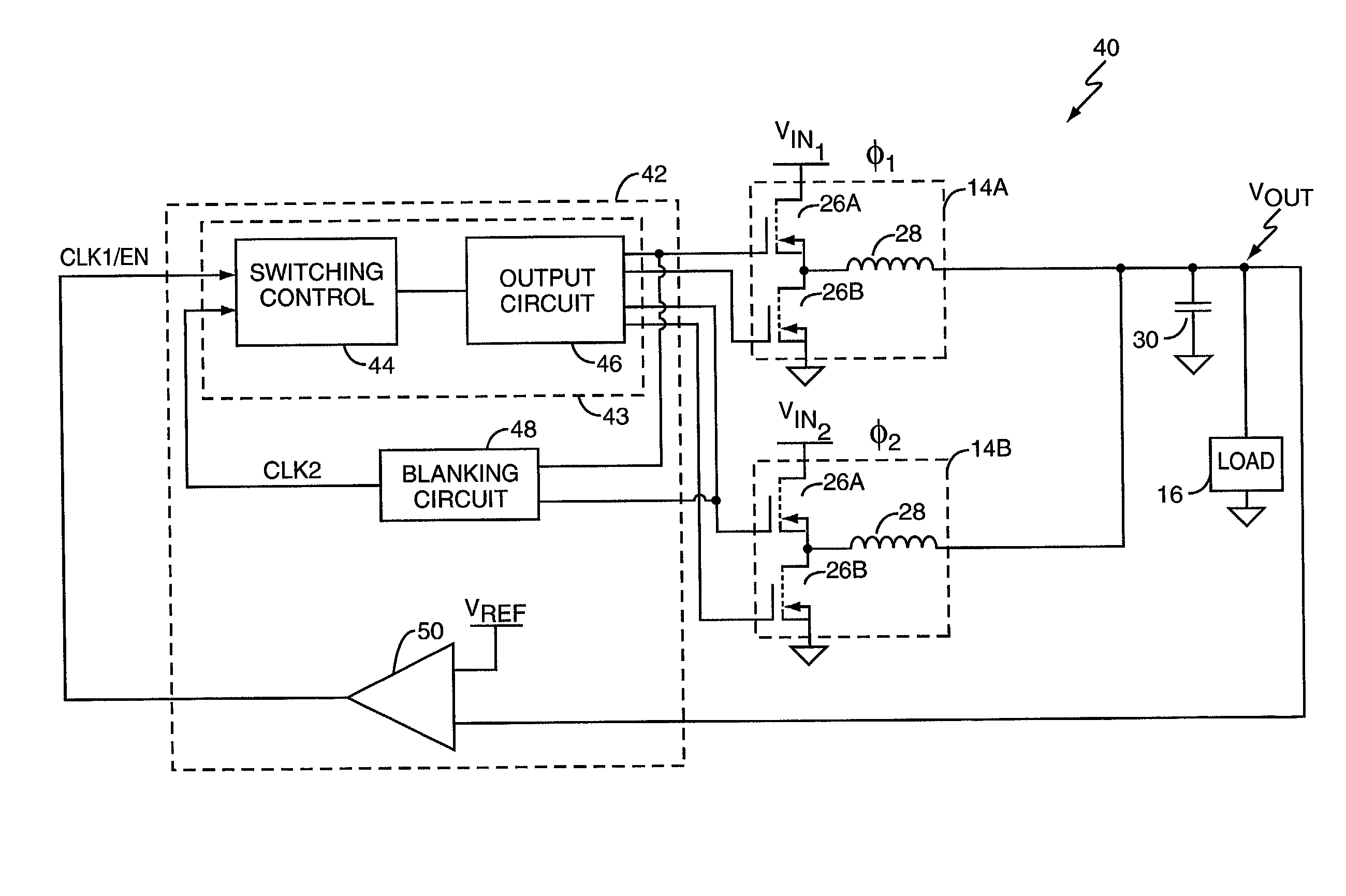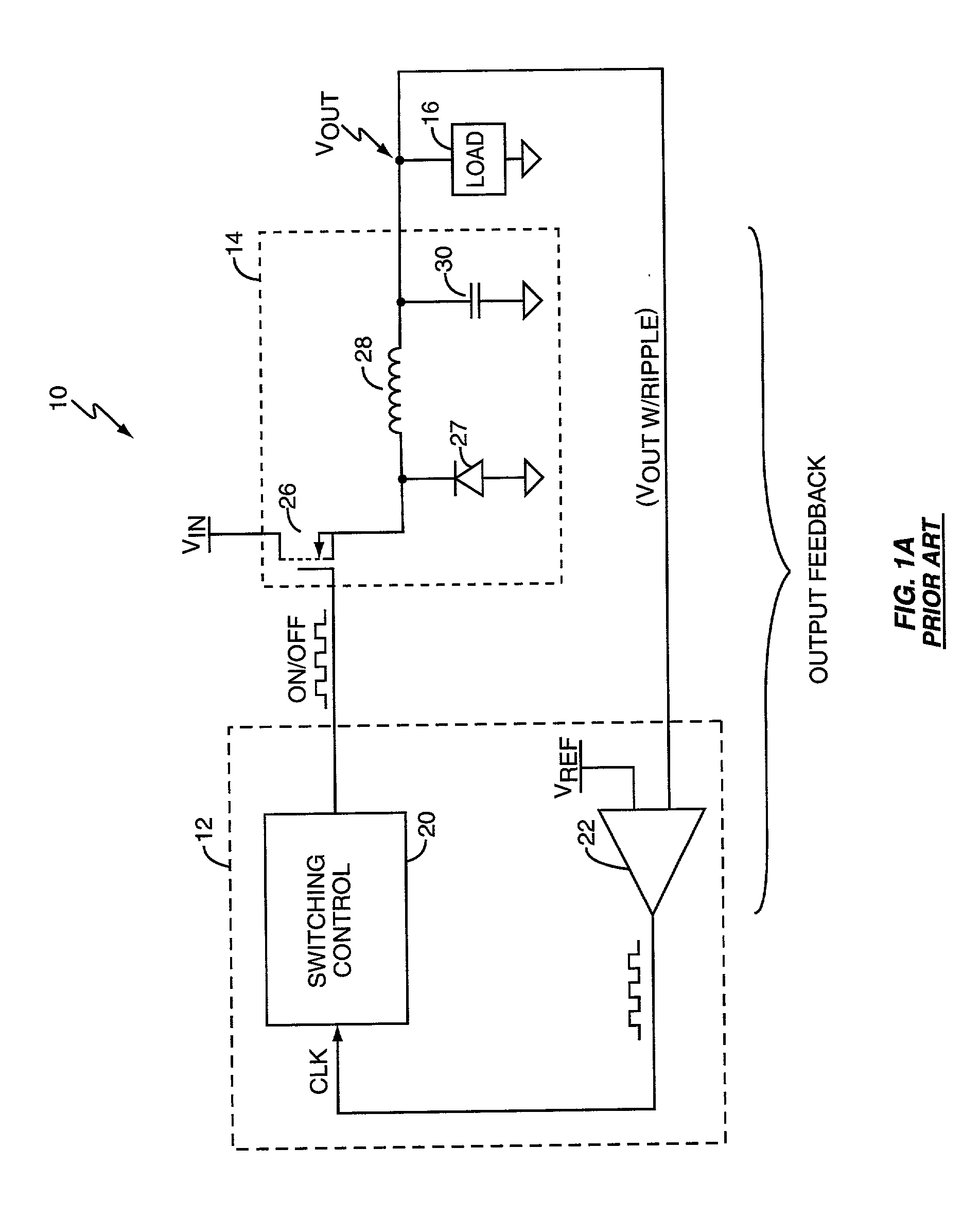Self-clocking multiphase power supply controller
a multi-phase power supply and controller technology, applied in the direction of electric variable regulation, process and machine control, instruments, etc., can solve the problems of linear regulation inefficiency rising with increasing input/output voltage differential, unable to provide dramatic performance gains for modern microprocessors, and unable to operate at 2 vdc, so as to increase the noise immunity of ripple-mode regulation and extend the flexibility of the effect of flexibility
- Summary
- Abstract
- Description
- Claims
- Application Information
AI Technical Summary
Benefits of technology
Problems solved by technology
Method used
Image
Examples
Embodiment Construction
[0025] FIG. 1 illustrates a typical electrical system 10 that includes a switch-mode power supply controller 12, a switching circuit 14, and a load 16. The controller 12 controls switching of the switching circuit 14 to effect voltage regulation of the output voltage V.sub.OUT. The controller includes switching control logic 20 and a comparator 22. The output circuit 14 includes a switch 26, which may be a field-effect-transistor (FET), a catch diode 27, an inductor 28, and an output capacitor 30.
[0026] The controller 12 monitors the output voltage V.sub.OUT using the comparator 22 and generates switching signals that turn the switch 26 on and off to regulate the output voltage V.sub.OUT. The general operation of such switch-mode power supply circuits is well understood, and will not be discussed in detail.
[0027] Several techniques exist for monitoring the output signal being regulated by the controller 12, in this case V.sub.OUT, and include voltage-mode and current-mode feedback. ...
PUM
 Login to View More
Login to View More Abstract
Description
Claims
Application Information
 Login to View More
Login to View More - R&D
- Intellectual Property
- Life Sciences
- Materials
- Tech Scout
- Unparalleled Data Quality
- Higher Quality Content
- 60% Fewer Hallucinations
Browse by: Latest US Patents, China's latest patents, Technical Efficacy Thesaurus, Application Domain, Technology Topic, Popular Technical Reports.
© 2025 PatSnap. All rights reserved.Legal|Privacy policy|Modern Slavery Act Transparency Statement|Sitemap|About US| Contact US: help@patsnap.com



